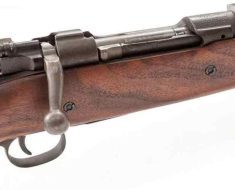“Effortlessly lifting and locking for precision shooting.”
Importance of Yoke and Crane in Revolver Mechanism
When it comes to understanding the inner workings of a revolver, two key components play a crucial role in its functionality: the yoke and the crane. These parts work together to ensure that the revolver operates smoothly and reliably, allowing the shooter to fire rounds accurately and efficiently.
The yoke is a metal rod that connects the cylinder to the frame of the revolver. It is responsible for holding the cylinder in place and allowing it to rotate when the gun is fired. The yoke is an essential part of the revolver mechanism, as it ensures that the cylinder is properly aligned with the barrel, allowing the bullet to be fired in the intended direction.
The crane, on the other hand, is a metal arm that swings out from the frame of the revolver to allow for easy loading and unloading of the cylinder. The crane is connected to the yoke and is responsible for holding the cylinder in place when it is not in use. When the shooter needs to reload the revolver, they simply swing out the crane, allowing them to quickly and easily insert new rounds into the cylinder.
The yoke and crane work together in perfect harmony to ensure that the revolver functions properly. When the shooter pulls the trigger, the yoke rotates the cylinder, aligning a new round with the barrel. The crane then swings out, allowing the shooter to reload the cylinder with fresh ammunition. This process can be repeated quickly and efficiently, making revolvers a popular choice for many shooters.
One of the key advantages of revolvers is their simplicity and reliability. Unlike semi-automatic pistols, which can be prone to jamming or misfeeding, revolvers are known for their rugged construction and dependable performance. The yoke and crane play a significant role in this reliability, ensuring that the revolver operates smoothly and consistently, shot after shot.
In addition to their reliability, revolvers are also prized for their accuracy. The yoke and crane help to ensure that the cylinder is properly aligned with the barrel, allowing for precise shot placement. This makes revolvers a popular choice for target shooting and hunting, where accuracy is paramount.
Overall, the yoke and crane are essential components of the revolver mechanism. Without these parts, the revolver would not be able to function properly, and the shooter would not be able to fire rounds accurately and efficiently. Whether you are a seasoned shooter or a novice, understanding the role of the yoke and crane in revolver functionality is key to mastering this classic firearm.
In conclusion, the yoke and crane are integral parts of the revolver mechanism, working together to ensure that the gun operates smoothly and reliably. These components play a crucial role in the accuracy and reliability of revolvers, making them a popular choice for shooters of all skill levels. So next time you pick up a revolver, take a moment to appreciate the intricate design and craftsmanship of the yoke and crane, and how they work together to make this classic firearm a true masterpiece of engineering.
How Yoke and Crane Impact Revolver Performance
When it comes to understanding the inner workings of a revolver, two key components that play a crucial role in its functionality are the yoke and crane. These two parts work together to ensure that the revolver operates smoothly and reliably. In this article, we will delve into the role of the yoke and crane in revolver performance and how they impact the overall function of the firearm.
The yoke is a metal rod that connects the cylinder of the revolver to the frame. It is responsible for holding the cylinder in place and allowing it to rotate when the gun is fired. The yoke is an essential component of the revolver as it ensures that the cylinder is properly aligned with the barrel, allowing for accurate shooting. Without the yoke, the cylinder would not be able to rotate, and the revolver would not be able to function.
The crane is another crucial part of the revolver that works in conjunction with the yoke. The crane is a metal arm that swings out to the side of the revolver, allowing for easy loading and unloading of the cylinder. The crane also houses the extractor, which is used to remove spent casings from the cylinder after firing. The crane plays a vital role in the overall operation of the revolver, as it allows for quick and efficient reloading of the firearm.
Together, the yoke and crane work in harmony to ensure that the revolver functions properly. The yoke holds the cylinder in place and allows it to rotate, while the crane allows for easy access to the cylinder for loading and unloading. Without these two components working together, the revolver would not be able to operate effectively.
One of the key ways in which the yoke and crane impact revolver performance is through their design and construction. High-quality revolvers are built with precision and attention to detail, ensuring that the yoke and crane are durable and reliable. A well-made yoke and crane will ensure that the revolver operates smoothly and consistently, even after repeated use.
Another important factor to consider when it comes to the yoke and crane is their fit and alignment. The yoke must be properly fitted to the frame of the revolver to ensure that the cylinder is held securely in place. If the yoke is loose or misaligned, it can cause the cylinder to wobble or become misaligned with the barrel, leading to accuracy issues and potential malfunctions.
Similarly, the crane must be properly aligned with the yoke to ensure that it swings out smoothly and allows for easy access to the cylinder. If the crane is misaligned or damaged, it can impede the loading and unloading process, making it difficult to use the revolver effectively.
In conclusion, the yoke and crane are essential components of a revolver that play a crucial role in its functionality. These two parts work together to ensure that the revolver operates smoothly and reliably, allowing for accurate shooting and quick reloading. By understanding the importance of the yoke and crane in revolver performance, gun owners can better appreciate the craftsmanship and precision that goes into the design of these firearms.
The Evolution of Yoke and Crane Designs in Revolvers
Revolvers have been a staple in firearms history for centuries, known for their reliability and simplicity. One crucial component that plays a significant role in the functionality of a revolver is the yoke and crane. These two parts work together to ensure the smooth operation of the revolver, allowing for the cylinder to rotate and align with the barrel for firing.
The yoke is a metal rod that connects the cylinder to the frame of the revolver. It serves as the pivot point for the cylinder, allowing it to swing out for loading and unloading. The crane, on the other hand, is the arm that extends from the frame and holds the yoke and cylinder in place. Together, the yoke and crane work in tandem to ensure that the cylinder is properly aligned with the barrel when the revolver is fired.
Over the years, the design of yokes and cranes in revolvers has evolved to improve functionality and durability. Early revolvers featured simple yokes and cranes that were prone to wear and breakage. As firearms technology advanced, manufacturers began to incorporate more robust materials and designs into their revolver components.
One common design improvement in yokes and cranes is the use of hardened steel or titanium alloys. These materials are more resistant to wear and deformation, ensuring that the revolver can withstand the rigors of repeated use. Additionally, modern yokes and cranes are often precision-machined to tight tolerances, ensuring a smooth and reliable operation.
Another innovation in yoke and crane design is the incorporation of ball bearings or bushings. These components reduce friction between the yoke and crane, allowing for smoother cylinder rotation and alignment. This not only improves the overall performance of the revolver but also extends the lifespan of the yoke and crane components.
In addition to material and design improvements, manufacturers have also introduced adjustable yokes and cranes in some revolver models. These adjustable components allow for fine-tuning of the cylinder alignment, ensuring optimal accuracy and performance. This level of customization is especially beneficial for competitive shooters or those who require precise shot placement.
Overall, the yoke and crane play a crucial role in the functionality of a revolver. Their design and construction directly impact the revolver’s reliability, durability, and performance. As firearms technology continues to advance, we can expect to see further innovations in yoke and crane designs that will further enhance the capabilities of revolvers.
In conclusion, the evolution of yoke and crane designs in revolvers has greatly improved the overall functionality and performance of these firearms. From hardened materials to precision machining, manufacturers have made significant advancements in ensuring that the yoke and crane components are durable, reliable, and efficient. As shooters continue to demand more from their firearms, we can expect to see further innovations in yoke and crane designs that will push the boundaries of revolver technology.
Common Issues with Yoke and Crane in Revolvers
When it comes to understanding the functionality of a revolver, it is important to recognize the crucial role that the yoke and crane play in its operation. These two components work together to ensure that the revolver functions smoothly and reliably. However, like any mechanical device, the yoke and crane can experience issues that may affect the performance of the revolver. In this article, we will explore some common problems that can arise with the yoke and crane in revolvers and discuss how they can be addressed.
One of the most common issues that revolver owners may encounter is a loose yoke. The yoke is the part of the revolver that holds the cylinder in place and allows it to rotate when the gun is fired. If the yoke becomes loose, it can cause the cylinder to wobble or misalign, which can lead to misfires or other malfunctions. This problem is often caused by wear and tear on the yoke screw, which can become loose over time.
To address a loose yoke, revolver owners can try tightening the yoke screw using a screwdriver. However, if the problem persists, it may be necessary to replace the yoke screw or have a gunsmith inspect the revolver for any other underlying issues. It is important to address a loose yoke promptly to prevent any further damage to the revolver and ensure its continued reliability.
Another common issue with the yoke and crane in revolvers is cylinder binding. Cylinder binding occurs when the cylinder becomes stuck and is unable to rotate freely. This can be caused by a variety of factors, such as dirt or debris in the cylinder or a misaligned crane. Cylinder binding can prevent the revolver from firing properly and may require immediate attention to resolve.
To address cylinder binding, revolver owners can try cleaning the cylinder and crane with a solvent to remove any dirt or debris that may be causing the issue. If cleaning does not resolve the problem, it may be necessary to have a gunsmith inspect the revolver for any other underlying issues that may be causing the cylinder to bind. It is important to address cylinder binding promptly to ensure the continued functionality of the revolver.
In addition to loose yokes and cylinder binding, revolver owners may also encounter issues with the crane itself. The crane is the part of the revolver that connects the cylinder to the frame and allows it to swing out for loading and unloading. If the crane becomes bent or damaged, it can prevent the cylinder from properly aligning with the barrel, which can affect the accuracy and reliability of the revolver.
To address issues with the crane, revolver owners can try gently bending the crane back into alignment using a pair of pliers. However, if the crane is severely damaged, it may be necessary to replace it entirely. It is important to address any issues with the crane promptly to ensure the continued functionality of the revolver.
In conclusion, the yoke and crane play a crucial role in the functionality of a revolver. Understanding common issues that can arise with these components and knowing how to address them can help revolver owners maintain the reliability and performance of their firearms. By addressing issues such as loose yokes, cylinder binding, and crane damage promptly, revolver owners can ensure that their firearms continue to function smoothly and reliably for years to come.
Maintenance Tips for Yoke and Crane in Revolvers
When it comes to understanding the inner workings of a revolver, the yoke and crane play a crucial role in its functionality. These two components work together to ensure that the revolver operates smoothly and reliably. In this article, we will delve into the importance of the yoke and crane in revolver maintenance and provide some tips on how to keep them in top condition.
The yoke is a metal rod that connects the cylinder to the frame of the revolver. It is responsible for holding the cylinder in place and allowing it to rotate when the gun is fired. The crane, on the other hand, is the part of the revolver that swings out to the side to allow for easy loading and unloading of the cylinder. Together, the yoke and crane work in tandem to ensure that the revolver functions properly.
One of the most important aspects of maintaining the yoke and crane is to keep them clean and free of debris. Over time, dirt and grime can build up in these components, causing them to become stiff and difficult to operate. To prevent this from happening, it is essential to regularly clean the yoke and crane with a soft brush and a solvent designed for gun cleaning.
In addition to keeping the yoke and crane clean, it is also important to inspect them regularly for any signs of wear or damage. Check for any cracks, bends, or other abnormalities that could affect the functionality of these components. If you notice any issues, it is best to have them repaired or replaced by a qualified gunsmith.
Another important aspect of maintaining the yoke and crane is to lubricate them regularly. Proper lubrication will help to reduce friction and ensure that the revolver operates smoothly. Be sure to use a high-quality gun oil or grease that is specifically designed for firearms. Apply a small amount of lubricant to the yoke and crane, being careful not to overdo it as this can attract dirt and debris.
When reassembling the revolver after cleaning and lubricating the yoke and crane, be sure to do so carefully and correctly. Improper reassembly can lead to malfunctions and potentially dangerous situations. Follow the manufacturer’s instructions carefully and double-check that everything is in place before testing the revolver.
In conclusion, the yoke and crane are essential components of a revolver that play a crucial role in its functionality. By keeping them clean, inspecting them regularly, and lubricating them properly, you can ensure that your revolver operates smoothly and reliably. Remember to handle your firearm with care and always follow proper maintenance procedures to keep it in top condition. If you have any doubts or concerns about the yoke and crane in your revolver, don’t hesitate to seek the help of a professional gunsmith. By taking good care of these components, you can enjoy your revolver for years to come.





